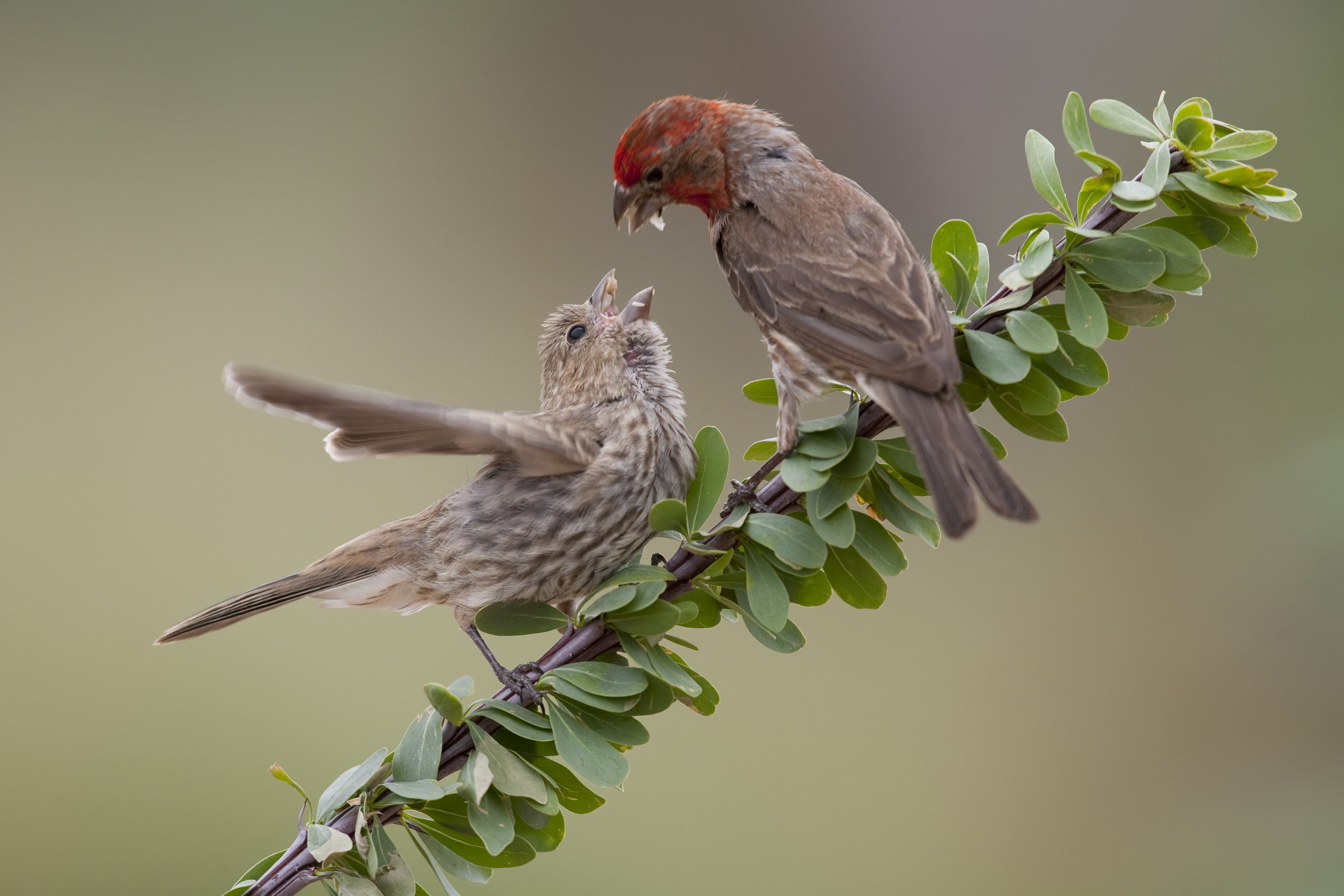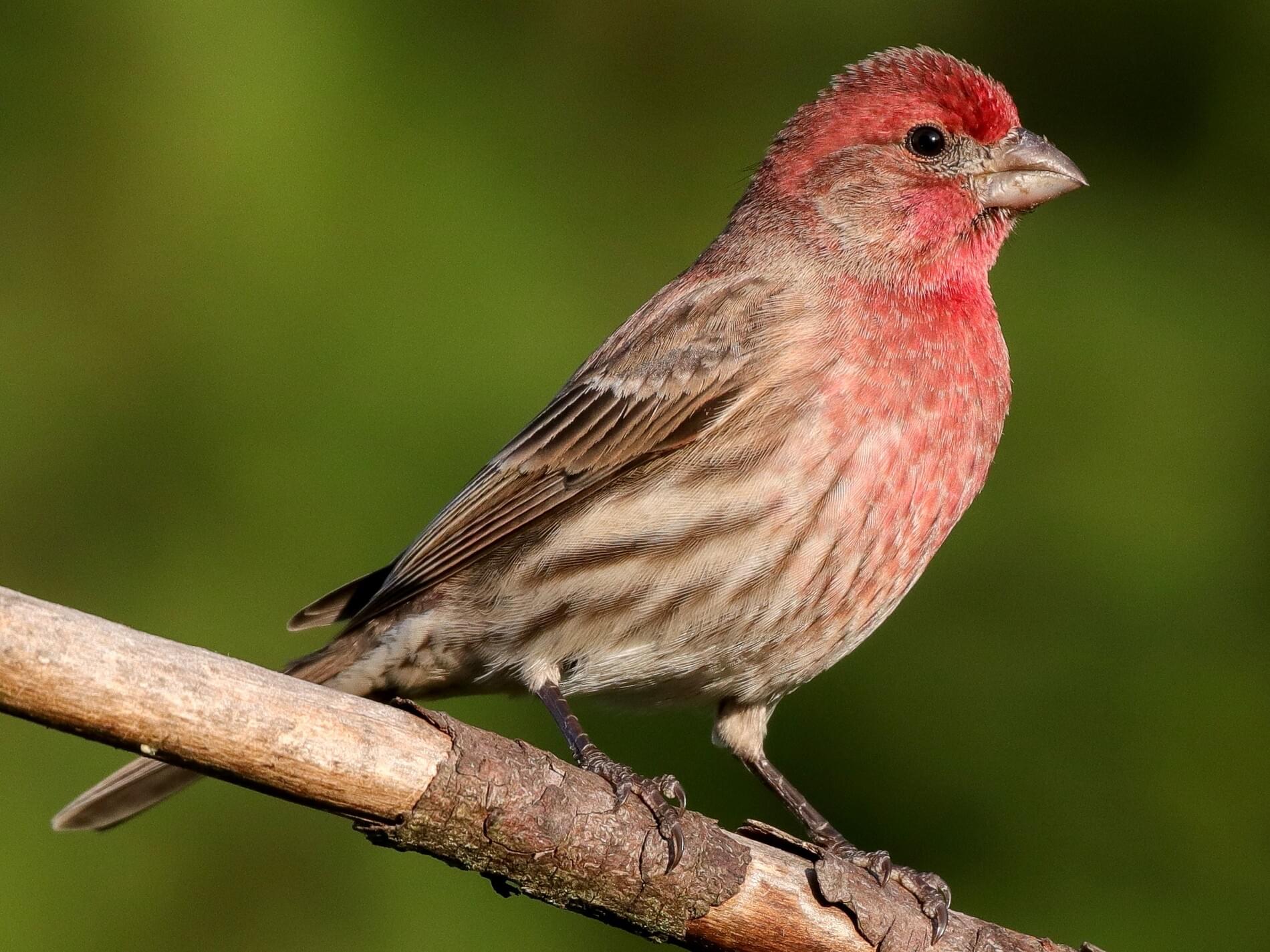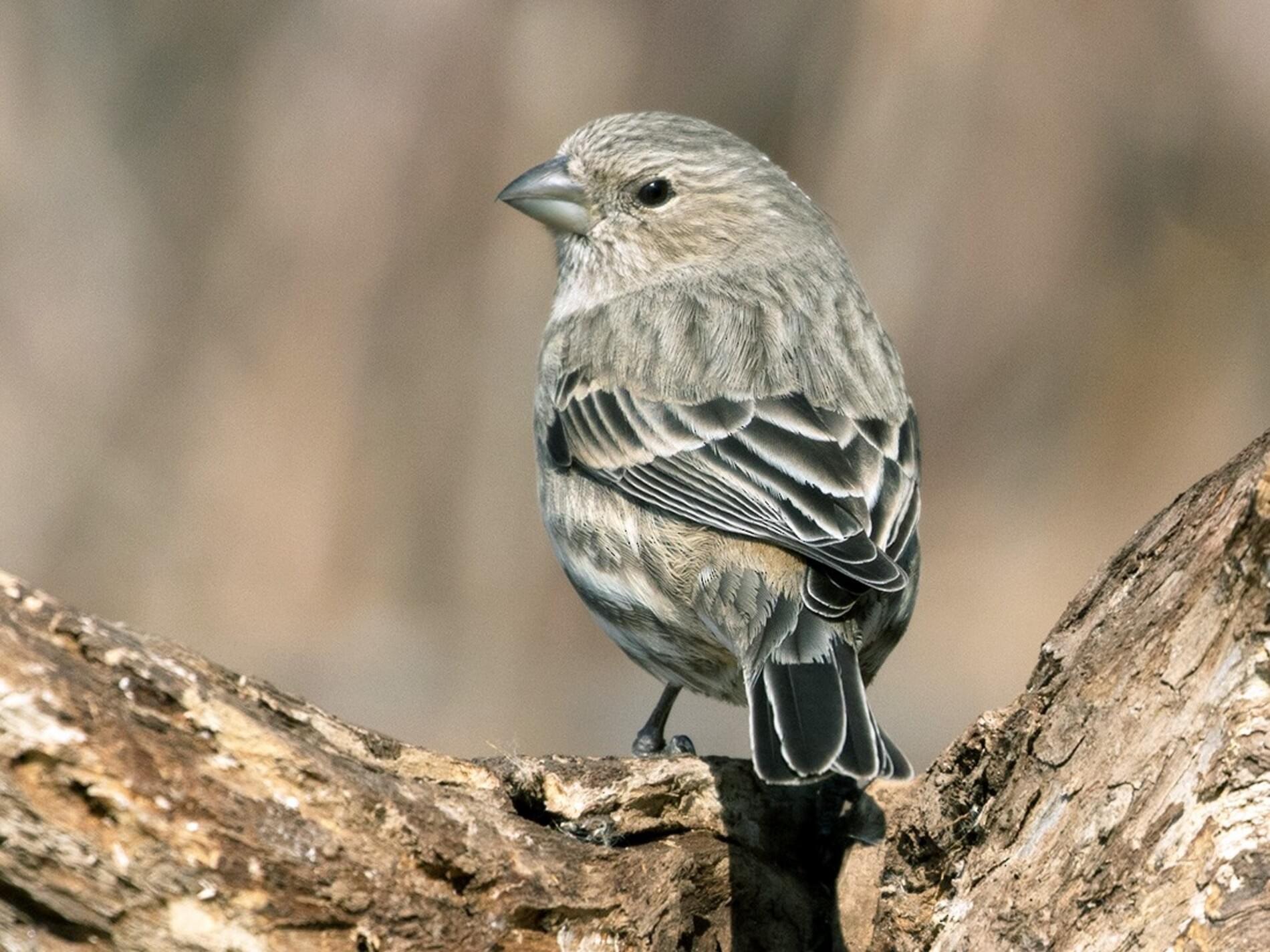Table Of Content

Both male and female house finches participate in nest site selection. They often search together, but also separately, not too far apart. Once a site has been chosen, only the female builds the nest. A highly social bird, the House Finch is rarely seen alone outside of the breeding season, and may form flocks as large as several hundred birds. House Finches feed mainly on the ground or at feeders or fruiting trees. At rest, they commonly perch on the highest point available in a tree, and flocks often perch on power lines.
Female House Finch vs Female House Sparrow
Gregarious and social, House Finches are found in noisy groups that are hard to miss if present. Look for House Finches feeding on the ground or at bird feeders, or perching high in nearby trees. Purple Finches aren’t purple, and House Finches don’t stick to houses. But that’s only the start of the confusion around these two doppelgangers. A red and brown bird at your feeder might be either one throughout much of the United States.
Conservation Status
Other finch species, such as the American Goldfinch, are also affected. The disease is spread through social contact, so keeping your bird feeders and baths clean is important. The House finch (Haemorhous mexicanus) is a North American bird in the finch family. There are estimated to be 40 million house finches across North America, making it the second-most populous finch, just behind the American goldfinch. The house finch and the other two American rosefinches are placed in the genus Haemorhous. In the event a clutch is unsuccessful due to the loss of a mate, the female would find a new mate and raise another clutch.
Nest and Eggs
Adult males are rosy red around the face and upper breast, with a streaky brown back, belly, and tail. Flocks, usually families of finches, often dominate feeders in large enough numbers to chase away house sparrows. House Finches will come to bird feeders that offer up sunflower seeds and are generally more likely to eat at bird feeders than sparrows. Birds in general have complex social interactions and relationships with each other, and house finches are no exception. They interact with other birds in various ways, including competition for resources and engaging in social behaviors. In urban settings, House Finches can be seen frequenting parks, gardens, and residential areas.
The male bird forages for fruits and nuts and then regurgitates its food to its young flock. But regurgitating food is a fast way to deliver nutrients to very young birds. In one season, a female House Finch can raise six clutches of eggs, but in most cases, they only raise two per season.
Species in This Family
The female house has a very plain face, unlike the purple and Cassin’s, which both show distinct eyebrows. The female house tends to have browner underparts than the 2 as well, with blurry streaks below. The female common rosefinch looks similar, but she is drabber, with less distinct streaking below. Males perform courtship displays to attract the attention of females.
House finches have a diverse and adaptable , primarily consisting of seeds and plant matter. Understanding their seed preferences and supplemental food sources can provide valuable insights into their feeding habits. House Finches prefer locations that provide cover and protection for their nests, such as dense shrubs or trees.

What is the House Finch Habitat Like?
The tails of female House Finches are also generally longer and slightly forked, as opposed to the squared-off tail of the sparrow. Sparrows have longer legs, and they’re typically paler in color. The female House Finch’s legs are shorter and a darker, grayish color 3.
Everything to know about the House Finch - Standard-Times
Everything to know about the House Finch.
Posted: Sun, 03 Dec 2023 08:00:00 GMT [source]
Habitat
These songbird species possess identical-looking conical beaks. The females are solely responsible for the construction of these nests, which can often take as little as 2 days. The females tend to go for the males with the most dazzling red colors as it is an indication of being properly fed. As a result, these males will be capable of finding more food for them. Sometimes, this bright red color runs through the back of the bird and extends toward the belly and in between the wings.
House Finches are currently among the most widespread and common birds across the United States—but as we'll see, that wasn't always the case. These days, they can be found brightening backyards and chowing down at seed feeders from the arid Southwest to the humid cities of the Northeast. Familiar as they are, there’s plenty about these cosmopolitan birds worthy of closer attention and deeper appreciation. Fill your backyard feeders with small, black oil sunflower seed. If House Finches discover your feeders, they might bring flocks of 50 or more birds with them. Find out more about what this bird likes to eat and what feeder is best by using the Project FeederWatch Common Feeder Birds bird list.
The best thing about this species is that observing them will bring a calming and therapeutic effect to our lives. They help us connect with nature, reduce our everyday stress, and find tiny moments of tranquility. House Finches introduce you to the urban wildlife experience as they have adapted to being in close proximity to humans. Consequently, they started spreading across nearly all of the eastern United States and southern Canada, including the unforested, dry areas in the next 50 years. The Song Sparrow is one of the most adaptable, abundant, and variable species in North America.

House Finches are common year round in human-altered areas throughout Washington. They are typically absent from montane forests and open, non-agricultural range. Their distribution is strongly correlated with the presence of bird feeders.
House finches are originally desert dwellers, native to the Southwest and Mexico. These birds have naturally expanded their range throughout the west, but their presence in the eastern United States is due to the pet store trade. When the trade became illegal in the 1930s, all captive house finches were released. Adult males are rosy red around the face and upper breast, with streaky brown back, belly and tail. Adult females aren’t red; they are plain grayish-brown with thick, blurry streaks and an indistinctly marked face.
If the male hangs around for too long, she will beg loudly to get his attention. They prefer edge habitat and are absent from dense coniferous forests. 5.) Although House Finches are well adapted to dry climates, they still need a lot of water.
House Finches are relatively small-sized species with fairly large and stocky bills. They have small wings, but their tails are long and squared-off in comparison. The construction process can take up to three weeks, with the female most actively working in the mornings and slowing down in the afternoons.
The nestlings grow rapidly and are ready to leave the nest after about 12 to 19 days. This process of nesting, hatching, and raising young can occur multiple times during the breeding season, which typically spans from spring to late summer. In addition to sunflower and thistle seeds, house finches also consume a variety of other small seeds, including those from dandelions, conifers, grasses, and weeds. Their ability to adapt their to the available seed sources allows them to survive in a wide range of habitats, from urban gardens to rural meadows. Overall, the of house finches, including their plumage, coloration, size, and shape, contribute to their unique charm and adaptability. Whether it’s their vibrant red feathers or their sturdy beaks, every aspect of their appearance serves a purpose in their survival and .



No comments:
Post a Comment